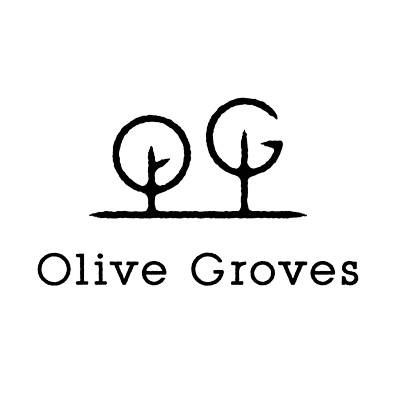The Tomato Alchemy
Imported from South America in the 16th century, tomato is at the heart of Italian gastronomy, particularly the tomato sauce that can be found in most Italian classics, including lasagna, pizza, or pasta Bolognese.
The sugo di pomodoro (tomato sauce) has been simmering on the Italian stoves for generations. From time to time, the nonna (grandmother in Italian) will remove the foam on the surface and check the flame in a careful ballet of gestures.
Fast forward in 2020. A younger woman in gym clothes enters her nonna’s kitchen. She is just back from a yoga session. “Ooooh it smells so good! And I AM famished”, she trumpets. “Just wait for the sugo” says the nonna with calm confidence. “I am making the pasta and it will be ready in a bit.” But the young woman wants something fast and healthy. She feels a salad would be more in keeping with her health-conscious track and starts slicing fresh tomatoes.
From there on starts a silent clash of generations in the kitchen. Two conceptions of what constitutes healthy food are seemingly at odds. Is slow-cooked tomato sauce a less healthy alternative than freshly-sliced tomatoes in salad? Or is it the reverse? Will science give reason to the grandmother or the young woman?
What’s in a tomato?
In a tomato, there is on average of 95% of water, 2.6% carbohydrates, 1.2% dietary fibers, 0.9% proteins and 0.2% fats. Tomatoes also contain Vitamin C, Vitamin E and Vitamin A (through the β-carotene). Tomatoes contain all 4 carotenoids, which are known for their antioxidant properties, with a higher amount of lycopene, thought to be the most potent of the four. Just like high quality extra virgin olive oils, tomatoes also contain polyphenols, but in lower proportion.
It should be noted that tomatoes can be problematic for histamine-intolerant individuals, because it does contain naturally-occurring high levels of histamine – like spinach and wine. This has been verified, and in case of adverse effects, histamine-intolerance should indeed be researched.
Better in a salad or in a sauce?
Nutrition science has been very vocal about preserving nutrients and minerals in fresh fruits and vegetables, and consuming them with as little transformation as possible. Therefore, it would seem counter-intuitive to tout the nutritional benefits of cooked foods. Indeed, raw tomatoes, with their high content in prebiotic fibers that have a proven positive effect on friendly gut bacteria[1], have their rightful place in a healthy and balanced diet.
More surprisingly, it seems the benefits of eating tomatoes cooked is even higher, as the process of cooking seems to increase the strength of the lycopene antioxidant present in the tomatoes, and thus its concentration and bioavailability in the cooked tomato sauce [2].
The Mediterranean diet has been thoroughly studied for its relation to better overall health, life expectancy, fighting heart disease and several forms of cancer. At the centre of this diet are extra virgin olive oil and tomatoes, often cooked together.
The extra virgin olive oil bonus
A fascinating Turkish study sought to explain what would be so healthy in cooking those two foods specifically together, and the findings were even more potent than expected [3]. The addition of extra virgin olive oil in cooking increased the antioxidant potential of the tomato sauce by a factor of 4.
Tomatoes have it both ways, they are good for us whether cooked or raw, and there is no substantial ground for shying away from either – unless one is histamine-intolerant. Cooking them with (duly filtered) extra virgin olive oil will strengthen their antioxidant potential as well as deepen the sauce’s rich taste. The casual kitchen feud that started this article can safely be reconciled.
Gnocchi in olive oil and tomato sauce
Our recommendations for fresh tomatoes in Singapore
Finding fresh and tasty tomatoes in Singapore is notoriously difficult, as the climate is not the friendliest for tomato-growing. We recommend buying tomatoes:
- Organic, as tomato skin is known to heavily concentrate in pesticides, if used to grow them[4].
- Local to reduce carbon footprint.
For your cooked tomato needs, our organic and high quality options should have you covered. Our organic, Gambero Rosso winning Passata and double tomato concentrate, made in Tuscany with only fresh tomatoes and no additive, will be the perfect basis to any tomato sauce recipe, and will still tick one off your five a day list.
If kids are screaming and food needs to be on the plate within the next five minutes, you can also resort to the healthy sugar-free tomato ketchup.
Please find our favourite recipes with tomatoes here!
- In the Apulian salad called Acquasale
- Cooked as a base for the Umbrian Lentil soup
- As an essential sauce to the iconic Sicilian Pasta alla Norma
[1] García-Hernández, J., Hernández-Pérez, M., Peinado, I., Andrés, A., & Heredia, A. (2018). Tomato-antioxidants enhance viability of L. reuteri under gastrointestinal conditions while the probiotic negatively affects bioaccessibility of lycopene and phenols. Journal of Functional Foods, 43, 1-7. doi:10.1016/j.jff.2017.12.052
[2] Stahl, W., Heinrich, U., Wiseman, S., Eichler, O., Sies, H., & Tronnier, H. (2001). Dietary Tomato Paste Protects against Ultraviolet Light–Induced Erythema in Humans. The Journal of Nutrition, 131(5), 1449-1451. doi:10.1093/jn/131.5.1449
[3] “Effects of cooking and extra virgin olive oil addition on bio-accessibility of carotenes in tomato sauce”, Merve TOMAŞ, Osman SAĞDIÇ, Gizem ÇATALKAYA, Derya KAHVECİ, Esra ÇAPANOĞLU ; Turkish Journal of Agriculture and Forestry, 02.10.2019, 43: 478-484
[4] Dirty Dozen™, Environmental Working Group's 2020 Shopper's Guide to Pesticides in Produce™


